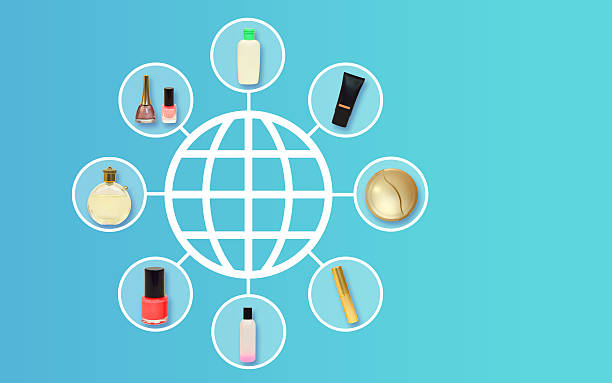2025 Global Cosmetics New Trends - Green Sustainability
In 2025, the global cosmetics industry has reached a crucial crossroads in its journey towards green and sustainable development. Consumers today are far more aware of environmental issues and are placing a strong emphasis on eco - friendliness. At the same time, the worldwide push for sustainable development goals is also making a significant impact. As a result, a new wave of green sustainability is sweeping across the cosmetics industry, influencing everything from the raw materials used, to packaging design, production methods, and more.

1. The Prevalent Use of Environmentally Friendly Raw Materials
Degradable Materials
More and more brands are turning to the use of biodegradable materials such as PLA and PHA. These materials can naturally decompose in nature, greatly reducing the environmental impact of traditional non - biodegradable materials. Brands that choose these materials are not just following the trend; they are taking practical steps to contribute to a cleaner Earth.
Recycled Plastics and Marine Waste
Some innovative and forward - thinking brands are using recycled plastics, and even ocean waste, as their packaging materials. This dual approach not only helps to control the severe plastic problem but also demonstrates the brands' strong commitment to environmental protection. It clearly tells consumers that the brand is actively involved in solving environmental issues.
Natural Plant Extracts
Natural plant extracts and organic ingredients have become key features of green cosmetics. These ingredients are gentle on the skin, suitable for all skin types, and provide excellent skincare benefits. Brands that focus on these natural elements are attracting consumers who want effective products and a more natural approach to beauty.
Sustainably Sourced Raw Materials
Certain environmentally aware brands are going the extra mile by sourcing their plant raw materials in a sustainable way. This ensures that the extraction process doesn't disrupt or harm the delicate ecological balance. By doing this, they can protect the environment while still providing high - quality ingredients for their products.

2. Sustainable Packaging Design
Promotion and Popularization of Refillable Design
Between 2024 and 2025, the cosmetics industry has been working hard to promote refillable designs as a key way to reduce carbon emissions. The design concept benefits both consumers and brands. For consumers, this means lower long - term costs, and for brands, it is an important step towards a more sustainable future. By reducing the amount of packaging, refillable designs have a significant impact on the industry's environmental performance.
Minimalist Packaging and Packaging Innovation
Minimalist packaging has become very popular in the cosmetics world. By getting rid of excessive and unnecessary decorations, brands are using fewer resources. There's also a growing trend of using FSC - certified paper and environmentally friendly ink for printing. This not only reduces pollution but also matches the values of environmentally conscious consumers. Take Kao as an example. They've made great progress in reducing plastic packaging. They managed to shrink the width of the polyethylene plastic bottle container molding material, which led to a thinner bottle body and a big reduction in resin usage.

3. Green Production and Supply Chain Optimization
Energy Conservation and Emission Reduction in the Production Process
Cosmetics companies are now actively implementing energy - saving and emission - reduction measures in their production. By optimizing production workflows, improving efficiency, and using clean energy sources, these companies are significantly reducing their carbon emissions. This benefits the environment and also positions them as leaders in sustainable business practices.
Green Supply Chain Construction
Building a green supply chain has become a must for the entire industry. Companies now fully understand the importance of environmental protection and sustainability at every stage of the product lifecycle, from raw material procurement, through production and processing, to product transportation and the sales end. They're carefully choosing raw material suppliers with environmental certifications, streamlining logistics and distribution plans to minimize carbon emissions during transportation, and working with like - minded partners to drive the overall green and sustainable development of the cosmetics industry.
4. Enhancing Consumer Engagement
Consumers’ Preference for Green Products
According to the “Sustainable Beauty Consumer Research” released by “UserSay”, a well - known beauty brand public opinion analysis institution, in 2024, a whopping 75% of consumers showed a clear preference for beauty product packaging made from recyclable or biodegradable materials. This data clearly shows that consumers care not only about the product quality but also about its environmental impact.
Interaction between Brands and Consumers
Brands are using social media, offline events, and other platforms more and more to interact with consumers. Through these interactions, they promote green concepts and proper product usage methods. This not only educates consumers but also makes them feel more involved and identified with the brand, creating a stronger connection based on shared environmental values.
In 2025, the new trend of green and sustainable development in the cosmetics industry is unfolding vigorously, with raw material innovation, packaging upgrade, production - supply chain optimization leading the way. This transformation is driven by consumer demand and market competition, but it is also a clear signal of the cosmetics industry's firm commitment to global sustainability. With the continuous advancement of technology and the sustained growth of consumer environmental awareness, the green and sustainable development of the cosmetics industry will reach new heights, bringing a future filled with more environmentally friendly and high - quality beauty products.
Post time: Feb-07-2025




